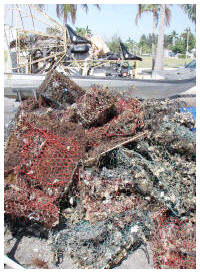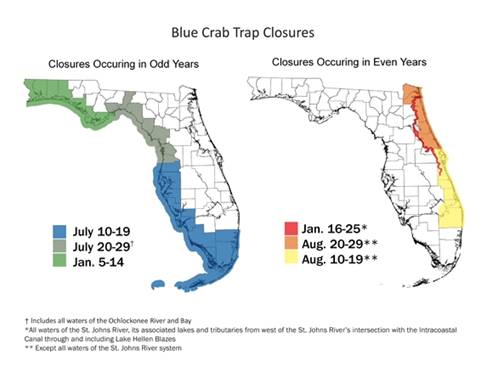
Remove your crab traps for 10 days or face losing
Recreational and commercial blue crab harvesters in certain areas of the Panhandle must remo
ve their blue crab traps from the water before Jan. 5, the first day of a 10-day trap closure. This closure will give groups authorized by the Florida Fish and Wildlife Conservation Commission (FWC) the opportunity to identify and retrieve lost and abandoned blue crab traps from the water.
The January trap closure includes state waters from the Florida/Alabama state line through the Franklin/Wakulla county line. Waters of the Ochlockonee River and Bay are not included in this closure.
 Traps can be placed back in the water Jan. 15. Until then, blue crabs may be harvested with other gear, such as dip nets and fold-up traps. Blue crab harvesters may also use standard blue crab traps during the closure if the traps are attached to a dock or other private property.
Traps can be placed back in the water Jan. 15. Until then, blue crabs may be harvested with other gear, such as dip nets and fold-up traps. Blue crab harvesters may also use standard blue crab traps during the closure if the traps are attached to a dock or other private property.
Lost and abandoned blue crab traps are a problem in the blue crab fishery, because they can continue to trap crabs and fish when left in the water. They can also be unsightly in the marine environment, damage sensitive habitats and pose navigational hazards to boaters on the water.
The closure is one of three regional, 10-day blue crab trap closures that will occur in 2013 on the Gulf coast of Florida. Coastal waters from Broward through Pasco counties will close to traps July 10-19, and waters from Hernando through Wakulla counties, including all waters of the Ochlockonee River and Bay, will close to traps July 20-29. There are six regional closures total: three in even-numbered years on the east coast and three in odd-numbered years on the west coast (see map).
